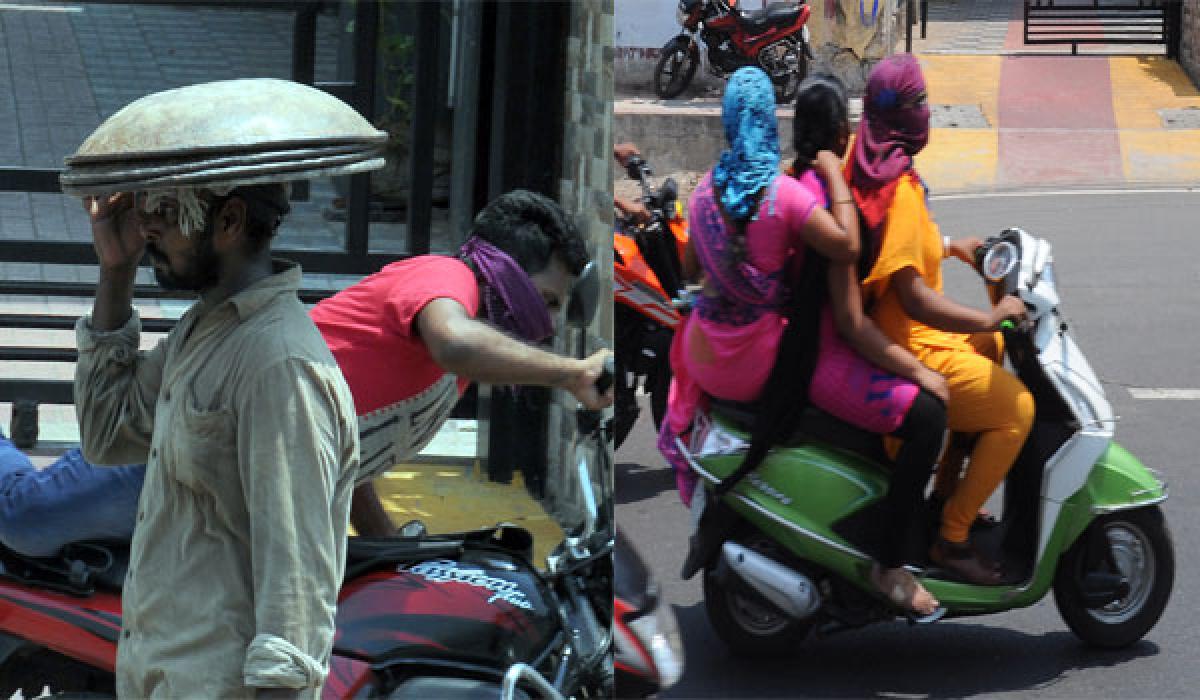Live
- Study explains mechanisms behind food poisoning, gut infections
- UN warns armed violence deepens humanitarian crisis in Sudan
- Maha Vikas Aghadi will win over 160 seats, form government in Maharashtra, says Shivakumar
- 6 Factors to Consider While Choosing the Right IVF Clinic in Hyderabad
- PM Modi emplanes for three-nation visit to Nigeria, Brazil, Guyana
- Chandrababu stresses on deregulation in telecom sector at Hindustan Times conference
- MP govt to promote 'Gita Jayanti' like other festivals
- Sidhant Gupta Revolutionises India’s Dairy Sector with Cutting-Edge Technology
- National Press Day 2024: Honouring Journalism in the Digital Era
- Margashirsha 2024: Dates, Rituals, and Spiritual Significance
Just In

Temperature in the city, temporary capital of Andhra Pradesh, is increasing by one degree every year, thanks to increased chlorofluorocarbons and green house gases. Crops like paddy and black gram were also hit due to excessive use of fossil fuels and increased use of air conditioners.
Vijayawada: Temperature in the city, temporary capital of Andhra Pradesh, is increasing by one degree every year, thanks to increased chlorofluorocarbons and green house gases. Crops like paddy and black gram were also hit due to excessive use of fossil fuels and increased use of air conditioners.
Highlights:
- V V Prabhakara Rao, head of the department, Science & Humanities, Andhra Loyola College, blames it on increase in automobiles and air conditioners for the rise in temparature
- Expanding green campuses is a solution to contain heat, he explained
- Adopting drip irrigation and digging water conservation pits are also essential
- Encouraging indoor plants is another way of escaping from the impact of carbons
After bifurcation, Andhra Pradesh capital witnessed heavy visiting population. The city accommodated many thousands of families who have been working for capital building at Amaravati. There are several other reasons that contributed for increase in population in and around the city. Use of automobiles has been increasing steadily.
The summer heat is unbearable this time as temperature is on the rise. People are preferring to stay indoors unless they have emergency work in the city. When The Hans India asked the possible reasons for this phenomenon, V V Prabhakara Rao, head of the department, Science& Humanities, Andhra Loyola College, blamed it on increased automobiles and air conditioners.
He said, “The non-stop consumption of power generated at thermal stations has increased the presence of carbon emissions. When we don’t have proper greenery to absorb the carbon emissions, the environment turns uncomfortable. Felling of trees has been going on for development of infrastructure needed for new capital. When chlorofluorocarbons increase, ultraviolet (UV) rays directly touch the surface of the earth as the ozone layer depletes fast. These rays cause cancer. As the automobiles also use fossil fuels, greenhouse gasses increase,” Rao said.
Saying that expanding green campuses is a solution to contain heat, Rao explained, ”Switching over to alternative sources of energy can solve the problem to a great extent. An eight-year-old tree can supply oxygen necessary for a human being for life time apart from absorbing carbon emissions. This is the reason why we ask to plant 10 saplings for felling of one tree. When care is taken by watering it and guarding, the plant will take 10 years to grow into a tree.
The other way of protecting environment is to use solar, wind, biogas and other non-conventional sources of energy. Adopting drip irrigation and digging water conservation pits are also essential. Encouraging indoor plants is another way of escaping from the impact of carbons. They should opt for nine varieties of saplings that absorb carbon such as spider plant and snake plant. Neem tree helps in reducing carbon presence in environment.”
The increased water evaporation rate causes excessive sweat in Vijayawada, the city-born and brought-up academician said.
Rao informed that this summer is the hottest and alternative energy resources would help in reducing carbon emission.
By Noor Shaik

© 2024 Hyderabad Media House Limited/The Hans India. All rights reserved. Powered by hocalwire.com







